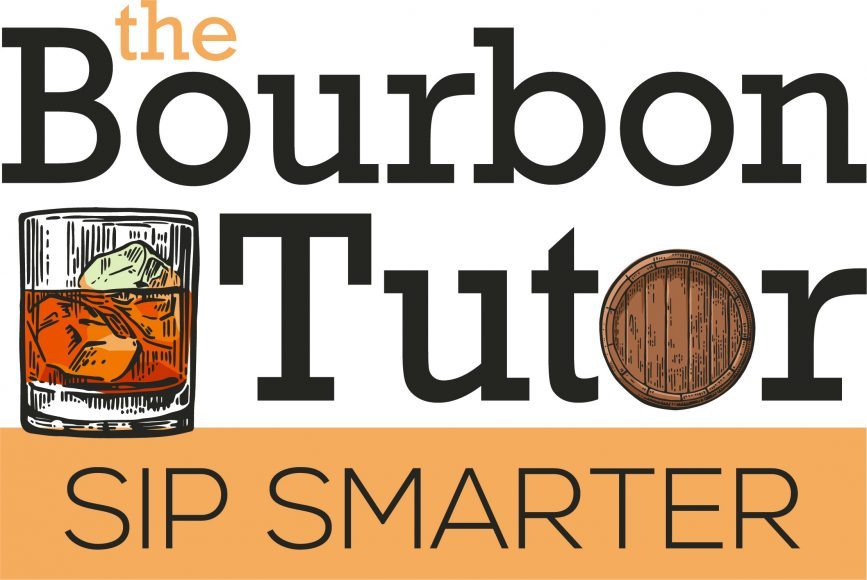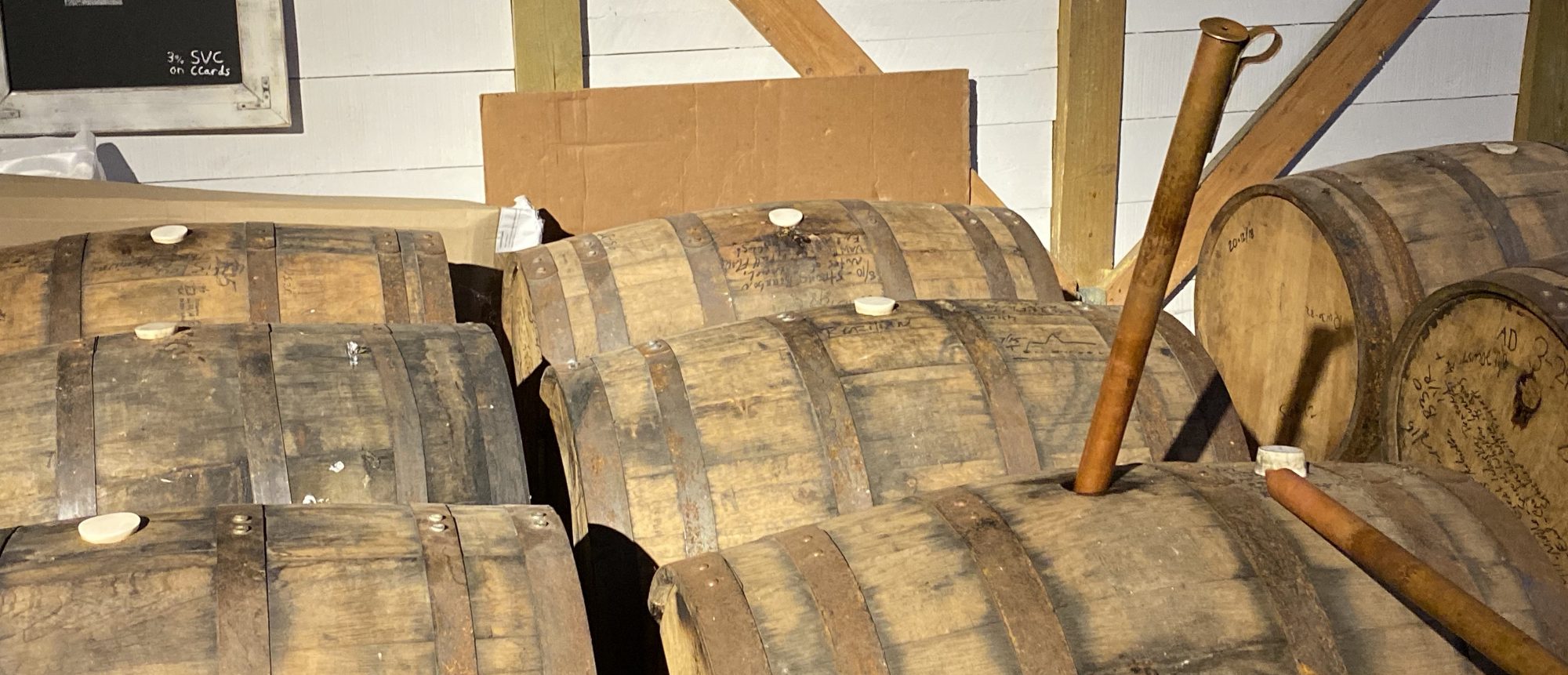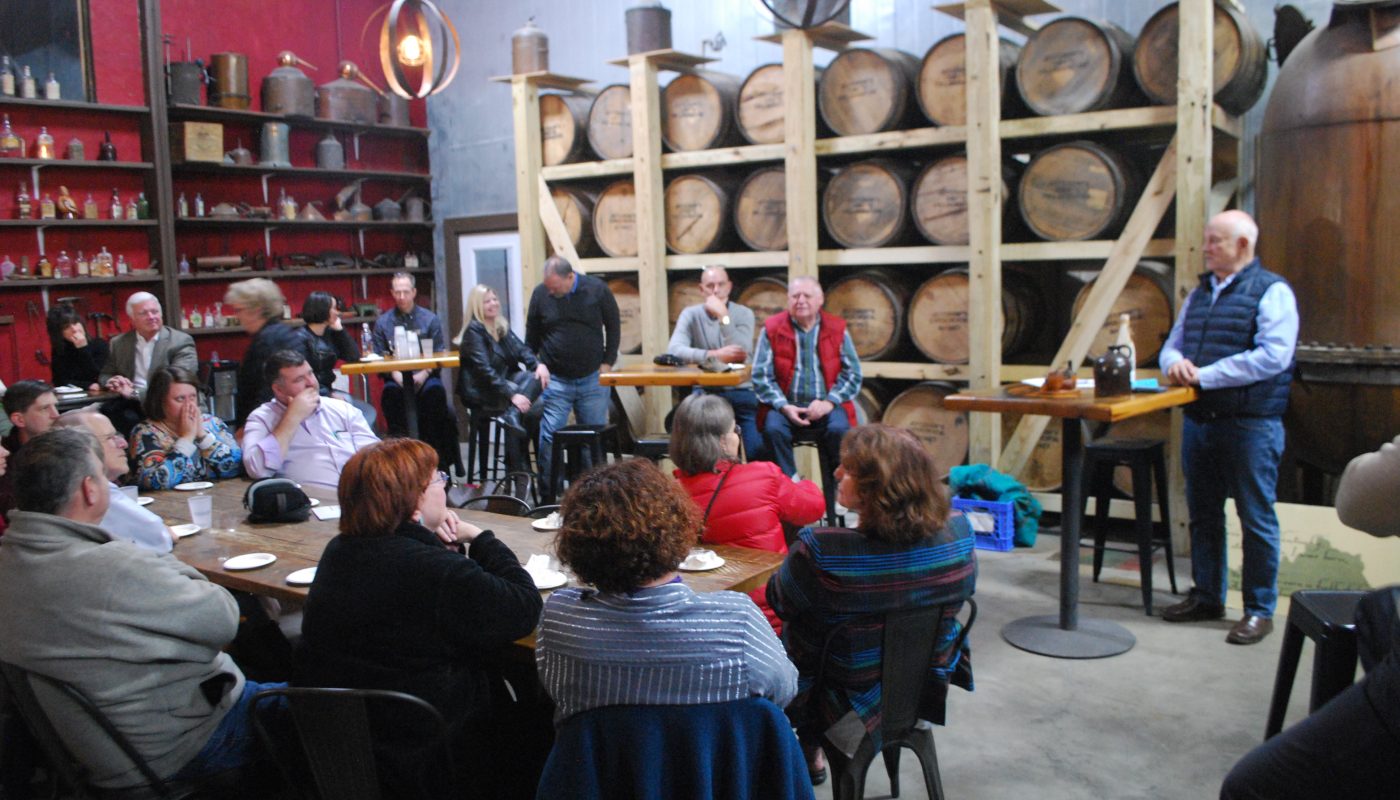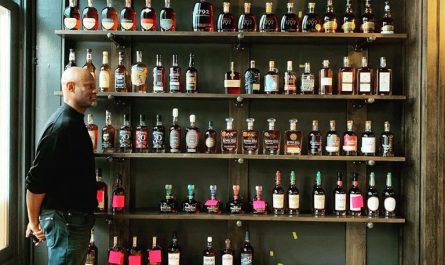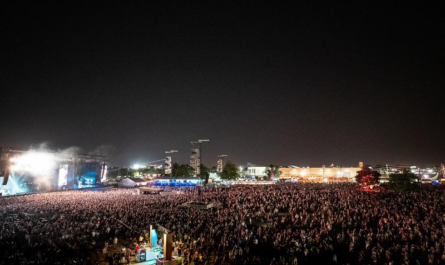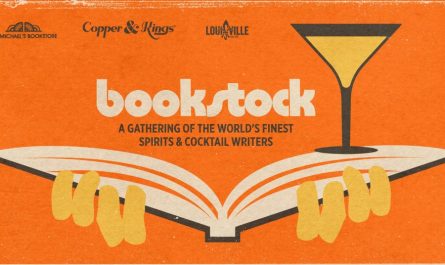By Brian G. Miller
How much bourbon history could one learn in a place that until nine years ago was an abandoned ice cream plant?
I was initially excited, but then skeptical, to learn that Kentucky Artisan Distillery (what’s the name of their bourbon again?) was hosting a four-part Bourbon History series. Now I don’t pretend to be any smarter than the average bourbon bear, but how authentic could such an experience be? Sponsored by the distillery, the Oldham County Historical Society, (they make bourbon in Oldham County?) and Tour Oldham County KY, I had to admit the first night’s program on “Moonshine and Modern Distilling” did look quite interesting.
And they were (rightfully) just as skeptical of me. After my first request to cover the event was turned down (wait, what is The Bourbon Tutor?), I received an invitation.
After I checked in, within seconds I was handed a sample of their Whiskey Row bourbon, then walked between walls of antique distilling equipment into a large, high-ceilinged room full of vintage bourbon bottles, jugs, more whiskey paraphernalia, a big spread of food, and a bar serving various Jefferson’s Bourbons. Towering over it all was a wall of aging bourbon barrels and a 16-foot copper pot still. I was definitely in the right place for the next couple of hours. And right then I knew I would learn some things about bourbon history.
Some background: Kentucky Artisan Distillery (KAD) is a contract distiller and bottler in Crestwood, Kentucky, just 20 minutes outside Louisville. It distills and bottles bourbons for other brands, primarily Jefferson’s Bourbon. Whiskey Row is the KAD house brand bourbon, along with its sister brand Iron Quarter, and Billy Goat Strut North American Whiskey. KAD is one of 19 smaller artisanal/craft distilleries around the Commonwealth that are part of the Kentucky Bourbon Trail Craft Tour.
Before things got started, I talked to Bob, who told me he’s a KAD tour guide and retired CPA, and Liz, the Visitor Center Manager, who put together the event. Like everyone else on the staff I met that night, Bob and Liz were knowledgeable and enthusiastic about spreading the word on the great things happening at KAD and the great bourbon they’re making.
According to Liz, the plan was to listen to two speakers before going on a tour of the distillery. The only thing I love more than learning about bourbon and touring distilleries is talking about bourbon and tasting it, so I knew I was in for an enjoyable evening.
Moonshine Over Kentucky
The first-time event was sold-out and the room soon filled with 42 excited people. The first speaker, Dr. Nancy Theiss, the Executive Director of the Oldham County Historical Society in LaGrange, began by telling us about the colorful moonshining history in Oldham Country, not unusual among most Kentucky counties.
Elijah Craig, arguably Kentucky’s first distiller, had an Oldham County connection since his name appears on the land parcel records of the late 1700s, according to Dr. Theiss. The Reverend Craig probably didn’t make whiskey in Oldham County, but he bought and sold land here, she said.

Dr. Theiss cited the late Dr. David Maurer’s book Kentucky Moonshine, published in 1974. Maurer was a linguist she worked with at the University of Louisville (and the husband of one of my favorite high school teachers, Mrs. Barbara Maurer). Maurer said moonshining, the making of illicit high-proof alcohol outside the bounds of government regulations and taxation, happened in every state. But Kentucky was special for many reasons, including immigrants’ distilling knowledge and technology, proximity to the legal distilling industry, a sympathetic community willing to break the law, high profit potential for people with little money, and the belief that Kentucky’s limestone water was a key ingredient.
Maurer’s book yields this astonishing fact: from 1955 to 1957, greater than 1,000 Kentuckians were convicted on moonshine charges and sent to federal prison – more than from any other state. Unbridled Spirit, indeed! (That’s the current brand tagline of the Commonwealth of Kentucky.)
Moonshining grew everywhere during Prohibition and the moonshiner’s team now included the bootlegger, to sell the product, and the whiskey runner, critical to the operation because he had a car that was faster than the pursuing law enforcement. Moonshining found a place in popular culture all over the country, but especially in the South. From music and language, to art and religion, to television and movies, moonshine had an influence. If you’re a fan today of stock car racing, many Burt Reynolds movies, and the Dukes of Hazzard tv show, you owe a tip of your Junior Johnson #55 NASCAR ball cap to moonshine.
The first moonshine memory Dr. Theiss has from her childhood on the Oldham County family farm? When her father realized people were knocking on their door looking for their tenant farmer who apparently had a moonshine still out in the woods. Like many Kentucky counties, Oldham was “wet” until after World War II, but this new dry status fueled moonshine production here and all over the state.
Closing her remarks, Dr. Theiss shared a sign that hangs in the Oldham County History Center:
Here’s to old Kentucky
The state where I was born
Where the corn is full of kernels
And the Colonel’s full of corn
Author Unknown
My guess is, the Colonel was full of no less than 51 percent corn. Dr. Theiss told me later, “Moonshining really affected all of us who grew up in rural communities and in the 1950s and ’60s Oldham County was very rural. I really never reflected on how it affected my life, but now I realize how the culture was very well-ingrained in day-to-day life.”
Modern Distilling from Scratch
Next up was Steve Thompson, the President and Majority Owner of KAD to talk about modern distilling. First, he pointed out that even as every farm in Oldham County had a moonshine still, it was also home to several distilleries until Prohibition. They mostly produced brandy, rather than whiskey, thanks to the plentiful available fruit. As a way to preserve crops, the brandy became a currency that you could exchange for other goods.
Another reason Kentucky became a hot spot for moonshiners, Steve said, was because “it was where all the outlaws came when they were run out because they had to pay taxes in Virginia.”
Steve mentioned his large collection of historic distilling equipment and bottles that decorate the facility. “Some of these I’ve collected are actually works of art,” he said.

Standing in front of the large antique pot still, Steve explained the basics of the distilling process, pointing out that the bottom part is no different than a pot you have to boil liquid at home.
In 2012, having retired from Brown-Forman and a career of helping open distilleries around the country, Steve said he had no idea he would be back in the bourbon business. “Our idea was, basically, let’s just get a small still and have some fun,” he said. Before long, he and his partners were opening a small distillery in the old Ice Cream Distributors, Inc. building in Crestwood.
Today, KAD has many customers for whom it distills and bottles their recipes. They can distill and bottle just a few barrels up to more than 1800 a year for one customer. It’s all done in four different pot stills, as opposed to the vertical column still method of distilling that came later. KAD uses copper pot stills because, while they’re not as efficient as column stills, they are still the most dependable option and, Steve believes, pot stills bring a unique taste to the distilling process.
The Tour’s the Thing
After the program, I initially regretted not being in the first tour group that was led by my new friend Bob. I was counting on his CPA experience to nail the mash bill percentages and other number-based information on the distillery tour.
While waiting for the second tour to begin, I talked to Kim Buckler Hydes, the Executive Director of Tour Oldham, County KY and asked her if the audience for this event was bourbon lovers, history lovers, or bourbon history lovers. She said it was a great collaborative effort between the OC history center and distillery to bring all those groups together. As the evening wore on, I asked people why they had come and it was a pretty even mix of all three groups.
The evening’s other tour guide, Patty, introduced herself to the second group, telling us she’s a former schoolteacher and likes to talk (same), so we’d better get started. I knew I was in good hands.
At our first stop, Patty shared sample barrel staves with the differing char levels. Then we reviewed the entire process from milling to cooking to fermenting to distilling to aging.
Finally, we sipped samples of new white dog, the clear liquor just off the still. We were on a platform next to two century-old cyprus tanks full of bubbling golden sweet mash. Jade Peterson, Master Distiller, told us they were 12 hours apart in their life cycle.
I turned to the guy beside me and asked, “Have you taken the tour at Maker’s Mark? They let you put your hand right in the tank and taste the mash. Most people are disappointed with how it actually tastes.”
“Yes,” he replied. “It’s always fun to watch that. I’ve been to most of the distilleries.”
I looked down to see the Vendome Copper & Brass Works logo on his jacket. Of course, he’s with the people who build the gold standard in copper and brass stills in the bourbon industry.
He introduced himself as Patrick Ernst, a design draftsman at the Louisville company. Kentucky Artisan Distillery is one of his many clients. So, no more humble-bragging from me about other bourbon tours I’ve been on.
The next step in the process is for the finished distillate to go into the new white oak charred barrels to begin the aging process. As we approached a collection of freshly charred barrels, with bungs waiting to be hammered into place once they were full, Patty offered the most memorable quote I’ve heard from a tour guide on a distillery visit:
“I was a teacher and I never would have said this in a middle school classroom. I can’t believe I’m about to say it now. But you might want to go over and smell the bunghole.“
Patty the Tour Guide

Taking her advice, along with many others, I “nosed” the bunghole. And, surprisingly, it was a wonderful aroma that I could smell over and over, a fresh mix of the burnt sugars in the newly charred oak with a promise of the bourbon flavors to come. As someone said, it would make a good air freshener.
After the tour, I waited for my turn to talk to the Master Distiller. After introductions, I asked Jade if he had a chemistry degree like some other distillers. He said he came from a process engineering background, taking on every job he could until getting the one he has now. The KAD website says its “team of distillers operates a distillery that doesn’t make use of iPads or other technology; instead, they make use of their senses to be aware of the moment a particular batch is finished.” Jade offered for me to come back to see just how they do things. Just for fun, I might bring my iPad to take notes.
Lessons Learned
Here’s what this memorable experience taught me. If you’re truly interested in bourbon – how it’s made, the history, and stories behind it all – then get off the beaten path. Meet and talk with the interesting and passionate people who work every day to turn that “51 percent corn” into your daily drinker. How? Explore the Little Guys on the Kentucky Bourbon Trail Craft Tour (and the other small distilleries that aren’t members of this group.) That’s not to say you won’t have a wonderful experience with the Big Guys on the Kentucky Bourbon Trail. They represent the Walt Disney World of Whiskey and supply most of the world with its bourbon.

But if you want an organic, dare I say authentic, experience in Kentucky Bourbon Country, make sure you start small. Kentucky Artisan Distillery bills itself as “as close as a production facility in the 21st century can get to how bourbon was made 200 years ago.” You won’t want to miss taking their daily tours or attending the next three Thursday night Bourbon History Series events in April, August, and November. Click here for more information.
Spend time at the other craft distilleries in Kentucky. Take the tours. Seek out special events like tastings, classes, and extra tours that all the distilleries offer. Meet and talk to the people. Buy bourbon swag in the gift shops. Take home and experience their bourbons. Tell your friends. Better still, share with them the bourbon you brought home. That’s what an authentic bourbon experience is all about.
Photos by The Bourbon Tutor
